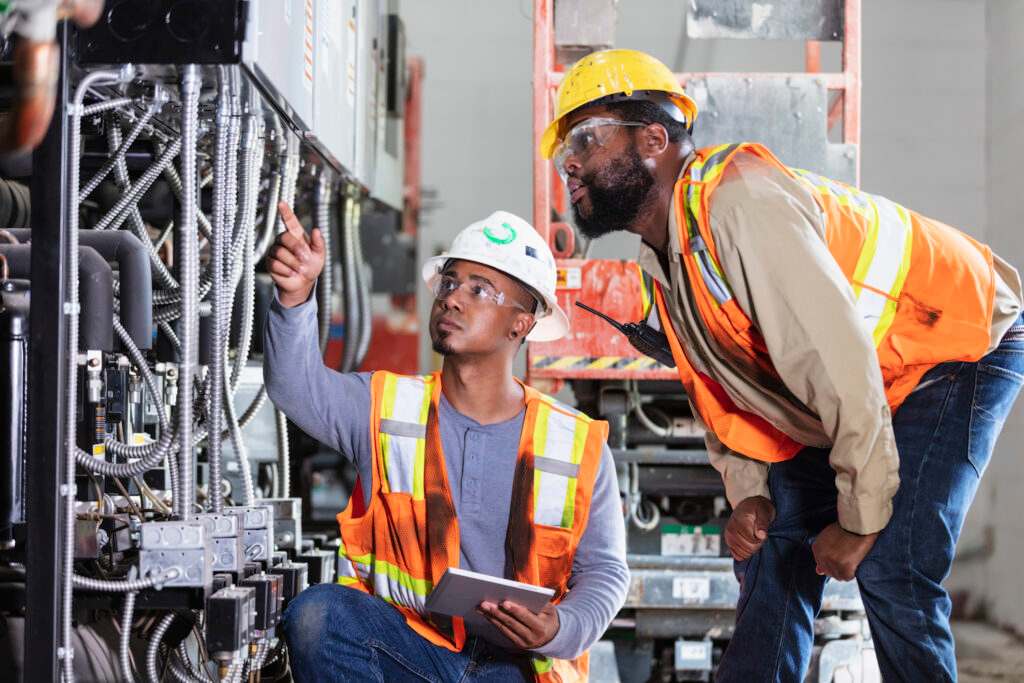Modern Industrial Safety Challenges and Solutions

Recent data reminds us just how urgent industrial safety needs are. Global estimates from the International Labour Organization (ILO) estimate that nearly 3 million people die each year due to work-related accidents and diseases. Hundreds of millions more suffer non-fatal injuries or illnesses caused by unsafe or unhealthy working conditions. Domestically, the U.S. Bureau of Labor Statistics (BLS) recorded 5,283 workplace fatalities in 2023, with a fatal injury rate of 3.5 per 100,000 full-time workers. These sobering numbers highlight the ongoing need for stronger industrial health and safety measures across all sectors.
Which Jobs Are the Most Hazardous?
Some industries carry more risk than others. Here are some of the most dangerous, according to AFL-CIO’s annual health and safety report:
- Agriculture, forestry, fishing, and hunting occupations recorded the highest fatality rate in 2023 of 20.3 deaths per 100,000 full-time workers, totaling 448 deaths. These jobs involve physically demanding tasks in remote locations, often with minimal oversight and exposure to heavy machinery, extreme weather, and unpredictable terrain.
- Mining, quarrying, and oil and gas extraction is the second-most dangerous sector, with a fatality rate of 16.9 per 100,000 full-time workers, or 113 deaths in 2023. Workers in these fields face risks from confined spaces, flammable materials, equipment failures, and geological instability, making many daily tasks potentially life-threatening.
- Transportation and warehousing experienced the next highest fatality: 12.9 deaths per 100,000 full-time workers, for a total of 930 deaths in 2023. Falls, struck-by incidents, and unpredictable environments are routine threats among truck drivers, forklift operators, railroad workers, warehouse loaders, and others.
- Construction occupations had a fatality rate of 9.6 per 100,000 full-time workers in 2023, with a total of 1,075 deaths. Falls, slips, and trips were the leading causes, particularly those involving ladders, scaffolds, and rooftops.
Building Safer Workplaces Starts with Smarter Systems
As companies upgrade processes and introduce automation, safety protocols must keep pace to avoid creating new hazards. Traditional checklists and training alone won’t cut it anymore. Today’s industrial health and safety strategies demand a more sophisticated approach.
Smarter Use of Technology
Many companies turn to technology for real-time safety data. For example:
- Wearables that track motion, heart rate, and body temperature alert teams to signs of fatigue or heat stress before a worker is in danger.
- Sensors placed around job sites can detect toxic gases, high temperatures or humidity, equipment malfunctions, or excessive noise levels.
- Mobile apps keep safety documentation, hazard checklists, and emergency procedures accessible on the go.
- A centralized platform for health and safety data streamlines compliance, audits, and incident response.
These digital tools help predict and prevent emergencies rather than merely responding to them. When integrated into daily operations, it’s easier for maintenance, supervisors, and HR to share insights that improve outcomes across the board.
PPE That Does Its Job
Personal protective equipment only works if it’s well designed, properly fitted, and suited to the task. Workers need gear that adapts to their environment without restricting movement or comfort. Regular assessments ensure workers are wearing and maintaining their gear and that it’s performing as intended.
Examples of potentially life-saving PPE include:
- Cooling vests for high-heat settings
- Vibration-dampening gloves for tool-heavy jobs
- Respirators and face shields for chemical or airborne hazards
- Fall arrest systems for elevated work
- Cut-resistant sleeves for sharp-material handling
- Steel-toe boots for areas with crush or puncture risks
Procedures That Become Part of the Culture
How do companies achieve low incident rates? They don’t just follow checklists. Instead, they build safety into every level of the operation, from frontline teams to executive leadership. This may include:
- Conducting routine safety audits
- Involving workers in hazard reporting
- Requiring refresher training beyond the onboarding process
- Analyzing injury reports, near-miss data, and sensor feedback to identify patterns and high-risk behaviors before incidents occur
Planning for Human Limits
Fatigue, stress, dehydration, and heat exposure are just as dangerous as faulty equipment, yet they’re often harder to track. Shift planning that incorporates adequate rest, hydration protocols, and job rotation is a good place to start. Workers who feel pressured to push through discomfort are more prone to accidents, but a culture that encourages speaking up can prevent injuries.
Overcoming Industrial Health and Safety Obstacles
Even with better tools and awareness, progress stalls when safety is treated as an add-on. Some companies resist upgrades due to cost concerns or staffing constraints. Others lack consistent enforcement or rely too heavily on outdated systems. When leadership doesn’t prioritize safety, it becomes easy to cut corners.
There’s also a growing gap between what’s required by regulation and what’s actually needed to keep workers safe. Meeting the legal minimum might avoid fines, but it’s not always enough to eliminate injuries. That’s why more organizations are seeking industrial safety solutions from third-party providers who can lend their expertise and an outside perspective.
Effective partnerships focus not on short-term fixes but on long-term changes. Whether it’s implementing a new industrial cleaning regimen to remove combustible dust, hiring a restoration company after a chemical spill, or conducting routine site audits, revamped industrial safety management can make the difference between a smooth workday and a serious injury.
The most reliable providers offer rapid response times, certified staff, and the ability to scale across multiple facilities. They should be equipped to assess environmental hazards, implement safety systems, and provide ongoing oversight.
Choose FCS Industrial Solutions
If you’re looking to improve industrial health and safety in the Mid-Atlantic or Southeast region, turn to FCS Industrial Solutions. Our consulting services include on-site evaluations, safety audits, and customized safety plans to help clients identify potential hazards and develop the appropriate solutions. Our team comprises some of the most highly trained safety professionals in the country. Plus, we’re licensed, insured, and certified by Avetta and ISNetworld, which reflects our commitment to quality and compliance. Contact us today to start improving the safety and reliability of your industrial operations.
